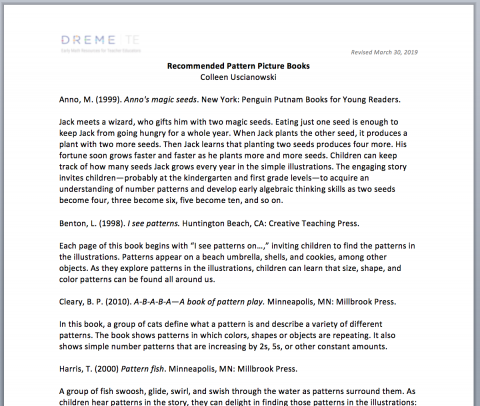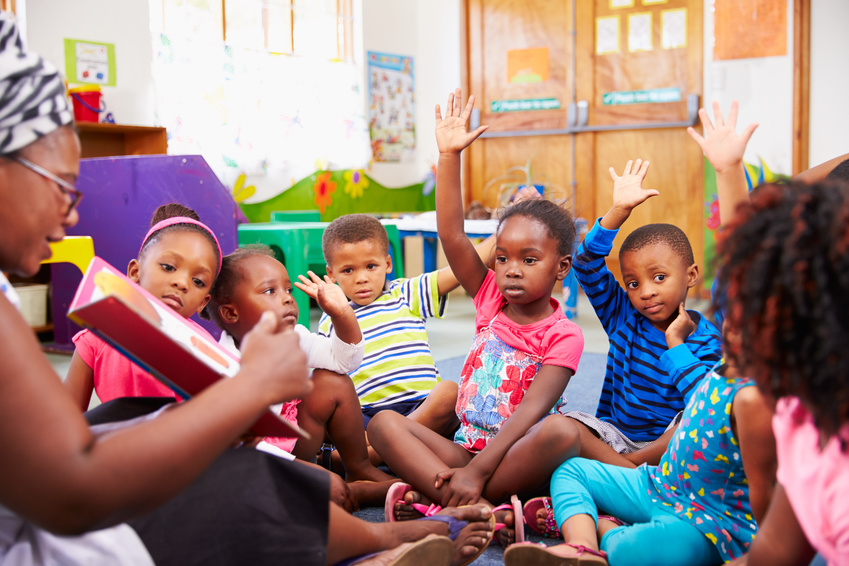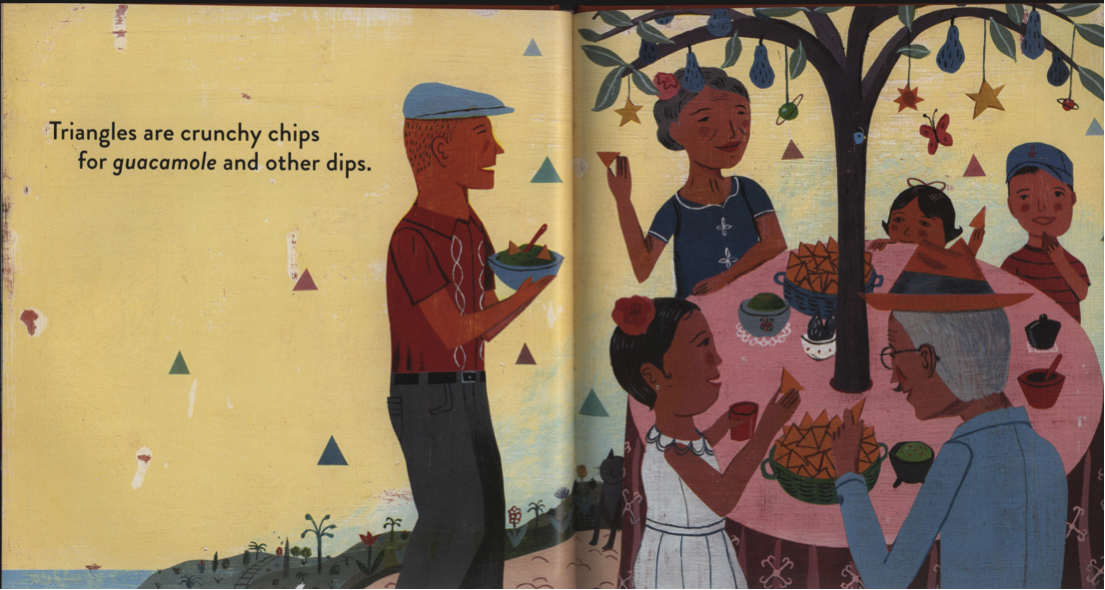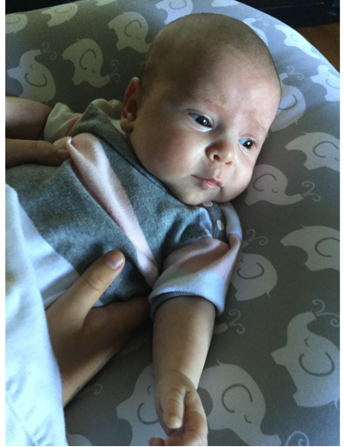Imagine that you, as a teacher, are preparing to read a book to a child or group of children and you want to use the story as an opportunity to develop understanding of patterns. This document describes what you might do.
by Colleen Uscianowski, Colleen Oppenzato, & Herbert P. Ginsburg
Supporting Engagement with Patterns Books
Preparing to Read
You can use Analyzing Picture Books—An Overview with its downloadable Math Picture Book Analysis Guide to help you examine and select one or more patterns books. Review How to Use Picture Books for some general tips for how to plan to read books with children.
Let’s consider a specific example. Here is a two-page spread from Mr. Noisy’s Book of Patterns by Rozanne L. Williams. On these pages, Mr. Noisy’s footsteps make a sound pattern as he walks.
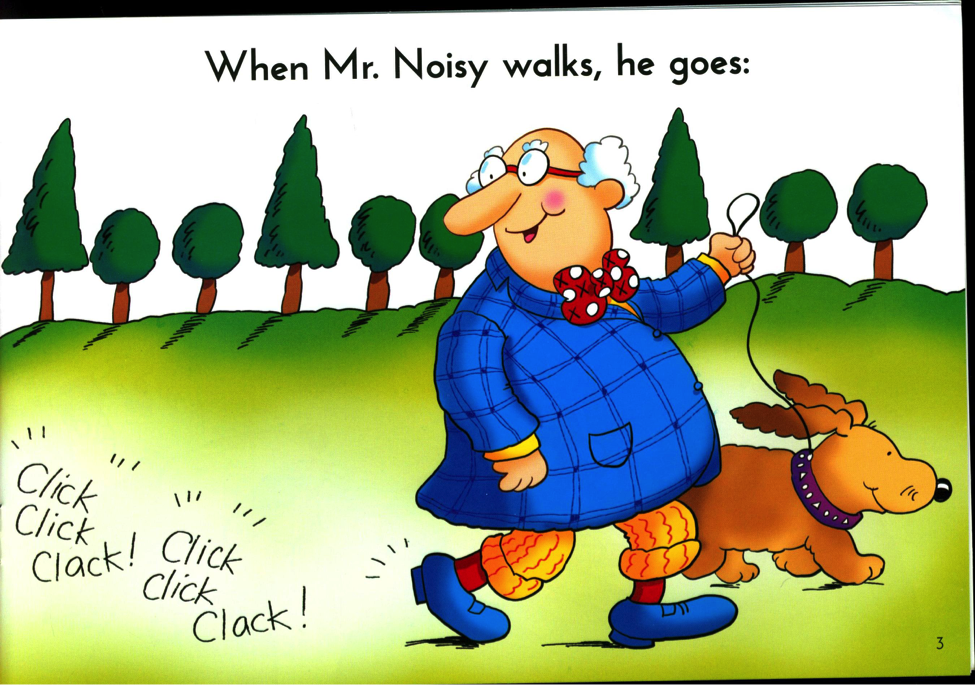
Look through the book from a child’s perspective. Think about what might help children understand the math on the page or what they might find confusing. The repeating pattern is demonstrated for children in the text, by means of a sound pattern: “Click Click Clack, Click Click Clack.” But some children may not understand that sounds can be the basis for a pattern. They may think patterns have to be visual. Other children may easily understand sound patterns—after all they know many songs—but may not see that the visual events on these pages can make a pattern too.
During Reading
Ask questions.
As appropriate, ask a variety of question types, both lower-level and higher-level.
- Lower-level questions are relatively simple and concrete, addressing what children see directly on the page or remember from a previous page, as well as key words from the text that you think they might not understand. For example:
- Recall: What pattern did we see on the last page?
- Notice: What pattern are the trees making? How would you describe the pattern?
- Describe: What is Mr. Noisy doing on this page?
- Higher-level questions are relatively complex and abstract, asking children to engage in thinking and go beyond the literal events on the page. For example:
- Predict: “Click Click Clack, Click Click Clack” is the pattern Mr. Noisy’s shoes make. If Mr. Noisy kept walking, what sound would he make?
- Generalize: Mr. Noisy’s shoe pattern is “Click Click Clack, Click Click Clack.” Can you make the same pattern with these shapes—the triangles and circles?”
- Compare: Is the “Click Click Clack” pattern of Mr. Noisy’s shoes the same as the pattern that the trees are making?
Explore children’s responses.
Elaborate on children’s responses and ask follow-up questions. For example:
Child: The trees make a pattern, too.
Teacher: I think you’re right. Can you describe the pattern?
Child: Triangle-circle-circle-triangle-circle-circle-triangle-circle-circle.
Teacher: That IS a pattern. If you were drawing the next tree, what would it look like?
Child: Triangle!
Teacher: What about the tree after that?
- Model complex thinking.
Children learn by listening to you, the adult, model productive ways of thinking about the story. For example:
- Teacher: I notice that Mr. Noisy’s shoes sound like Click Click Clack, Click Click Clack. I wonder what sound they’ll make if Mr. Noisy keeps walking. Let me tap my feet to the pattern: Click Click Clack, Click Click Clack. I think they’ll keep making that pattern and sound like Click Click Clack if he keeps walking! What do you think?
More Examples for Patterns Books
Young children can benefit from reading a story to help them examine different kinds of patterns. Pattern Fish by Trudy Harris shows several different kinds of patterns, including ABAB, AABAAB, and AABB and more.
This one is about how the sea horse is eating.
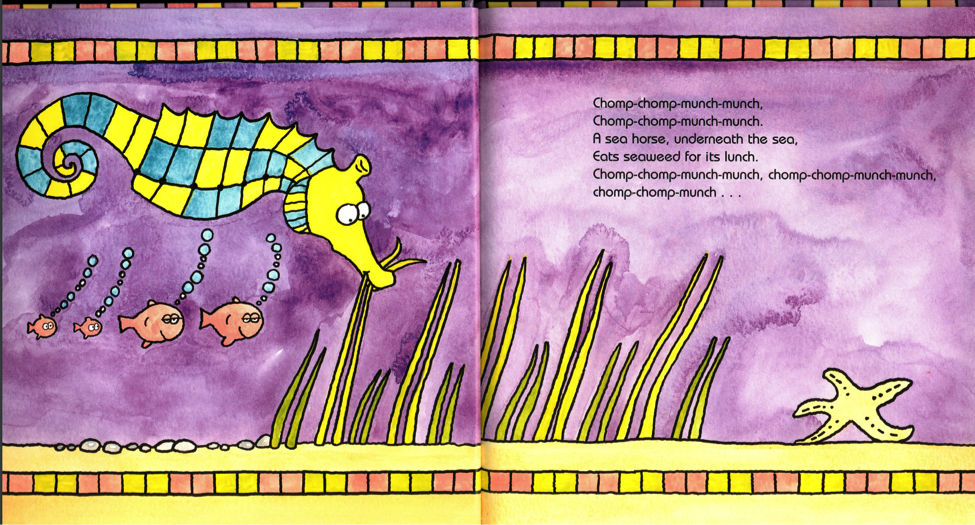
What Children Can Learn
Using Pattern Fish, a teacher can focus on a variety of pattern ideas and concepts.
To understand patterns, children need to not only say patterns but also to extend them.
- The sea horse’s eating is a pattern. “Chomp-chomp-munch-munch, Chomp-chomp-munch-munch, Chomp-chomp-munch…” What comes next? How do you know?
Children also benefit from being asked to compare patterns.
- What pattern do you see on the sea horse?
- Is the pattern “chomp-chomp-munch-munch” the same as the pattern of blue and yellow on the seahorse?
Questioning the Child
Regardless of the type of pattern being shown or described, you should ask both lower-level and higher-level questions.
Lower-level Questions
Ask children to describe the scene to find out how many relevant words they use spontaneously.
What’s do you see on this page?
Ask children to name objects as you point them out.
- What is this? (while you point to the seahorse)
Ask children about the bubbles coming from the mouths of the fish.
- How many bubbles do you see here?
- Do the bubbles make a pattern?
Higher-level Questions
Ask children to compare:
- Let’s name all the patterns we can find on this page. Are all the patterns the same? If not, how are they different?
Ask children to reason:
- We call this pattern an “AABB” pattern. Can you guess why?
Ask children to create their own AABB patterns. For example:
- Can you use these shapes to make a pattern that’s the same as chomp-chomp-munch-munch?
You can respond to children’s answers to any of these questions by asking,
- How do you know?
- Why?
- Can you explain what you said?

